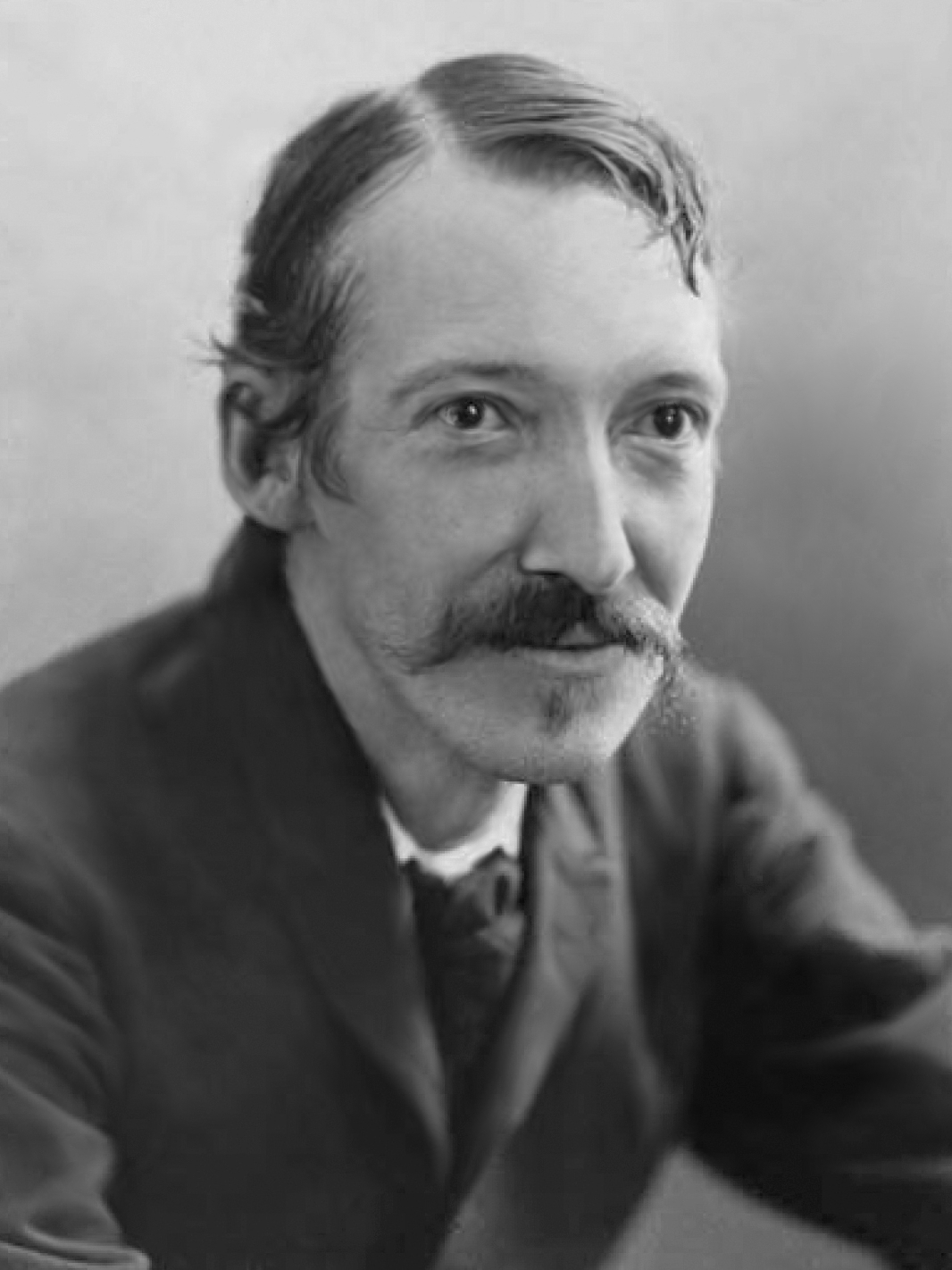10. My Shadow Questions & Answers
My Shadow
_By Robert Louis Stevenson
|
I have a little shadow that goes in and out with me, And what can be the use of him is more than I can see. He is very, very like me from the heels up to the head; And I see him jump before me, when I jump into my bed. The funniest thing about him is the way he likes to grow— Not at all like proper children, which is always very slow; For he sometimes shoots up taller like an India-rubber ball, And he sometimes gets so little that there’s none of him at all. He hasn’t got a notion of how children ought to play, And can only make a fool of me in every sort of way. He stays so close beside me, he’s a coward you can see; I’d think shame to stick to nursie as that shadow sticks to me! One morning, very early, before the sun was up, I rose and found the shining dew on every buttercup; But my lazy little shadow, like an arrant sleepy-head, Had stayed at home behind me and was fast asleep in bed. |
NEW WORDS
|
1. Shadow 2. Resembles 3. Funny 4. Bouncing 5. Moisture 6. Lazy 7. Understand 8. Asleep 9. Arrant 10. Buttercup |
WORD MEANING
|
1. Shadow – a darkness within a lighted area 2. Dew – watery drops 3. Buttercup – a yellow flower 4. Arrant – bad 5. Asleep – inactive, sleeping 6. Shoots up – grow up 7. Shoot up — to jump up very fast 8. Hasn’t got a notion — has no idea 9. Make a fool of someone — to trick someone 10. Coward — someone who becomes scared easily 11. Buttercup — name of a yellow flower 12. Arrant — total or absolute 13. Sleepy-head — someone who loves to sleep |
Summary of My Shadow
|
https://www.high-endrolex.com/32
This article discusses My Shadow summary which is a poem written by Robert Louis Stevenson. The poem revolves around a child and his shadow. He is fascinated by his own shadow that moves with him. The child starts noticing things about his shadow. He notices that it resembles him. Moreover, he also sees that the shadow does the same things as the child. For instance, when he gets in bed, the shadow does the same as well. Sometimes, it gets into bed before the child can. However, some things still confuse the child. It is that the shadow keeps changing its size. Sometimes, it grows very tall and other times it turns small. One day, the child decides to get up early. He notices dews on flowers but the shadow is missing. Thus, he assumes that his shadow is so lazy that it is still sleeping in bed. |
Q.1: Read the lines and answer the following questions:
“1 have a little shadow when 1 jump into my bed.” poem)
(a)Where does the shadow go and with whom?
Ans: The shadow goes in and out with the poet or person in the poem.
(b) What happens when the poet jumps on the bed?
Ans: When the poet jumps on the bed, he sees the shadow jump before him.
(c) Does the poet think the shadow is important?
Ans: No, he does not see of what use the shadow is.
Q.2: Read the lines and answer the following questions:
“The funniest thing about him is none of him at all.”
(Please refer to stanza – 2 of the poem)
(a) What is the funniest thing about the shadow?
Ans: The funniest thing about the shadow is the way he grows.
(b) When the shadow shoots up tall, what is it like?
Ans: When the shadow shoots up tall it is like an Indian rubber ball that bounces high.
(c) When the shadow is small, what is it like?
Ans: When the shadow is small, there is nothing of him at all.
Q.3: Read the lines and answer the following questions:
He hasn’t got a notion that shadow sticks to me!
(a) Does the shadow know how children ought to play?
Ans: No, the shadow does not have a notion or idea.
(b) Who does the shadow stick close to and seem like?
Ans: The shadow stays so close to the little boy that he seems like a coward.
(c) How would the little boy in the poem feel about sticking close to his nurse the way his shadow does?
Ans: He would feel ashamed.
Q.4: How does the little boy in the poem feel about his shadow?
Ans: The little boy is curious to know about his shadow and is confused about its funny ways. He is also amused by its strange behavior.
Q. 5: What makes a shadow? Do shadows change?
Ans: Shadows are formed when light cannot pass through an object. They are created on the side of the object opposite to the light source. Shadows change size according to the position of the light source. The position of the light affects the direction of the shadow.
Q. 6: Why does the poet call the shadow, a coward?
Ans: The poet calls the shadow, a coward because he always stays beside him as if he is afraid of facing difficult situations alone.
Q.7: What was the real reason for the shadow not going with the little boy in the morning?
Ans: The boy had left too early in the morning, even before the sun rose. Hence there was no shadow seen.
Q.8: Explain the following lines of poem:
(a) “For he sometimes shoots up taller like an india-rubber ball, And he sometimes gets so little that there’s none of him at all.”
Ans: The poet wants to say that his shadow sometimes grows big and bounces like an Indian rubber ball because of the source of the light on him. Sometimes, the shadow is so small that it is not visible at all.
(b) “I’d think shame to stick to nursie as that shadow sticks to me!” Ans: The poet says that he would be ashamed to stay close to his nursie as his shadow stays close to him.
(c) “But my lazy little shadow likes an arrant sleepy-head,
He stayed at home behind me and was fast asleep in bed.”
Ans: The poet had risen early and he found that even though he had risen, his shadow, like a sleepy head, lazy and languid, had stayed back in his room. It had not accompanied him, wherever he had gone.
Q. 9: Complete the following sentences:
(a) The shadow does not grow like proper children.
(b) The shadow of the poet is very like the poet from his heels up to head.
(c) The poet thinks the shadow is a coward because he stays just close behind him.
(d) The shadow jumps before the poet when he jumps into his bed.
Q. 10: What did the poet find on every buttercup and when?
Ans: The poet found shining dew on every buttercup in the early morning before the sun was up.
Q. 11: What is the shadow compared to when it shoots up taller? What is the funniest part of the shadow?
Ans: The shadow is compared to the Indian rubber ball when it shoots up taller. The funniest part of the shadow is the way he likes to grow.
Q.12: Why does the poet say that the shadow is not like proper children?
Ans: The poet said that the shadow is not like proper children because it does not grow slowly as proper children do and it sometimes grows too tall like an Indian-rubber ball while sometimes it gets so small that it is not seen at all.
Q.13: Where was the shadow one morning when the poet went out?
Ans: The shadow was lazily sleeping at home in the bed when the poet went out one morning.
Q.14: Choose the correct option:
(a) The poem is about a ____
i. shadow
ii. boy
iii. sun
(b) When the child jumps into his bed, the also jumps____
i. friend
ii. shadow
iii. boy
(c) The child compares with his shadow an ___
i. elastic
ii. Indian Man
iii. India- Rubber Ball
ANSWER THE FOLLOWING QUESTIONS
Q1) Who do you think your shadow looks like?
Ans: My shadow looks just like me.
Q2) Why do you think your shadow jumps into bed before you can?
Ans: I think my shadow jumps into bed before me because my room’s bulb is located just behind me.
Q3) What time of the day do you think it is when your shadow is the tallest? Why?
Ans: I think my shadow is tallest in the morning/ evening. It is so because the sun is far away from us in morning/ evening time than it is in afternoon.
Q4) Read the lines from the poem and answer the following questions:
He is very very like me, from the heels up to the head!
Q.(i) Who does he refer to?
Ans: He refers to the shadow
Q. (ii) Who does me refers to?
Ans: Me is referred to the poet.
Q.(iii) Why are he and me alike?
Ans: ‘He’ and ‘me’ are alike because ‘he’ is the shadow of ‘me’.
RHYMING WORDS:
1. Sleep: Beep, Leap, Keep
2. Shoots: Boots, Roots,
3. Funny: Sunny, Bunny
4. Jump: Pump, Lump
ANTONYMS:
1. Early X Late
2. Tallest X Shortest
3. Like X Unlike
4. Always X Never
5. Proper X Improper


